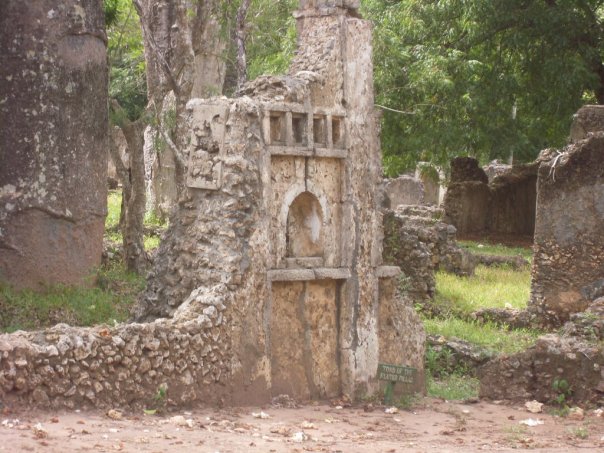For at least five centuries the Bajuni thrived, living a fairly peaceful subsistence existence, fishing, trading, and farming, in a string of cross-border settlements, from Kismayuu in southern Somalia down to the northern tip of Pate Island in Kenya, a distance of some 250 km. They did not live luxuriously, but they lived well enough and formed a coherent and stable community. Men travelled widely, as traders north up to Kismayuu, Muqdisho and southern Arabia, across the Indian Ocean to the east, and south to Lamu, Malindi, Mombasa, Tanzania, Zanzibar, the Comoro Islands, and Madagascar.

Some Bajunis were famous as sea captains the length of the East African coast. Fishermen spent several weeks each year in temporary fishing camps on other islands4. Women also travelled but less far, to nearby islands and towns to buy supplies, maybe occasionally to Muqdisho or Mombasa. Men took care of business, of making boats, making and mending nets, catching and selling fish. Women took care of the home, of cooking, of some agriculture and made some money by weaving baskets and collecting cowries for sale.
Children took care of goats and boys went out on fishing boats. Both sexes knew songs, stories, and poetry: some songs were the province of women, others of men. They would know the names of clans. Somalis, Bajunis, and other East African ethnicities divide the ‘tribe’ (Bajuni and Swahili kabila, Bajuni uchandru) into smaller groupings known as clans (Bajuni khamasi, Swahili and Bajuni ukoo). Bajuni clan names (see section 5) come from ancestors or places and clan affiliation used to play a role in allegiance, marriage, and inheritance. Bajunis were few, their mainland neighbours (recently Somali, formerly Oromo) were many, they were fairly defenceless, and their mainland neighbours were armed and aggressive.
The balance between them and the neighbours was fragile but stable. The main settlements were on the islands, with agricultural areas on the mainland opposite. When times got bad, Bajuni living or working on the mainland withdrew to the (Bajuni) islands. There is little suggestion that their pastoral neighbours showed much inclination to cross over to the islands, probably because they were not too interested in what was on offer – a lot of fish, limited edible flora, and few domestic animals. This situation continued after independence (1960 in Somalia, 1963 in Kenya). It started to change in Somalia in 1974, when the government started to move Bajunis off the islands, and it changed radically in 1991, with the fall of Siad Barre, the President of Somalia. In what follows, this period and the events from 1991 on are referred to as The Troubles.
The historical balance broke, ethnic Somalis rolled across the mainland settlements and flooded onto the islands. Ethnic Somalis (Hawiye, Darod/Marehan) decided to evict Bajunis from the islands where they had lived for centuries, telling them they had no right to be there (although they had been there longer than the intruders). Refugees tell horrific anecdotes of ethnic cleansing, involving chaos, theft, violence, rape, and murder of mothers and daughters beaten and raped: of fathers and sons being beaten, stabbed, shot, having their heads held under water till they drowned, being forcibly taken to Kismayuu and never returning: of whole communities being moved to forced labour camps in Kismayuu: of fishermen going on a fishing trip for several days and returning to find their village empty, devoid of people and families.
In all likelihood, the Bajunis and their culture will be gone from Somalia in the near future. At the time of writing, no one can be sure how many Bajuni remain in Somalia but an informed guesstimate would be at most a few hundred. There has also been orthographic cleansing. Since Bajunis were illiterate, their place names and their language were rendered by others, in the orthographic conventions of the others.
In southern Somalia, Italian conventions were used, and reproduced by non-Italians who came later: so the Bajuni village Kiamboni7 just north of the border with Kenya was spelt as Chiamboni/Chiambone. More recently, Somali nationalism has Somalized names, so Kaambooni, which has no meaning in Somali, and this policy of replacing Bajuni versions by those of others is followed by bodies such as the National Geographic and the British Admiralty. In Kenya, Bajuni names have long been replaced by Swahili ones, often misspelled, since they were originally recorded by writers who had never been to the places concerned, or were not linguists. In view of this, it seems an appropriate time to record what is known of the Bajunis, their language, and culture, before they and it are gone. This database assembles in one place material that hitherto has only been available in quite disparate places and despite the electronic world is often not easy to locate
[show_avatar email=11 align=left user_link=last_post show_name=true avatar_size=66]